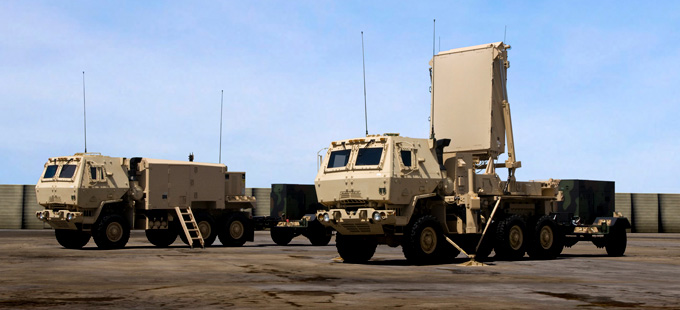Drone Defense: Army Anti-Artillery Radar Tracks UAVs
Posted on

Q-53 counterbattery radar (Lockheed Martin)
From lasers to jammers to snipers, the US military has tried lots of technologies and tactics to get rid of enemy drones. But before you can shoot it, you have to see it — preferably far away, before its cameras spot your troops and, say, dive-bomb them or relay their position to a battery of rocket launchers. So the Army is also experimenting with drone-detecting radar.
Enter Lockheed Martin’s AN/TPQ-53. This truck-mounted radar was originally designed to track incoming fire — rockets, artillery shells, and mortar rounds — and calculate its origin point for retaliatory “counter-battery” shots. Drones are dramatically different targets: Tactical drones operate at roughly the same altitudes as artillery but maneuver, often slowly, or outright hover in the air, rather than streaking along an undeviating trajectory. But modern AESA radars (Active Electronically Scanned Array) are considerably more versatile than traditional radars.
So in a recent test, the AN/TPQ-53 proved itself able to track and identifying multiple drones, passing the data via an unspecified network to a “command and control node.” (Lockheed wouldn’t tell me what network was used, but the most intriguing possibility is something called IBCS, designed to connect all the Army’s air and missile defense systems). At the same time, the AN/TPQ-53 multi-tasked by tracking incoming “rockets, artillery, and mortars” — which mean adding the counter-drone capability did not interfere with its original function.
The test was held recent Maneuver & Fires Integration Experiment (MFIX) at Fort Sill, Okla., home of the Army artillery school. Fort Sill is not coincidentally where the Army Vice-Chief of Staff, Gen. Daniel Allyn, said he recently saw some potential breakthroughs in counter-drone defense.
More than fifty AN/TPQ-53s have entered Army service since 2010, and a decision to move to full-rate production is expected later this year. It replaces the earlier AN/TPQ-36 and -37 radars in Army service.
At least two of the older -36s were given to the Ukrainians, who have been badly battered by Russian rocket artillery, often with drones acting as spotters. While details are sparse, the chief of US Army Europe, Lt. Gen. Ben Hodges, told reporters last year that the Ukrainians had made extremely creative use of US-provided counterbattery radars. The -53 models should be more versatile yet — something the US military desperately needs to keep up with the threat.
Subscribe to our newsletter
Promotions, new products and sales. Directly to your inbox.
